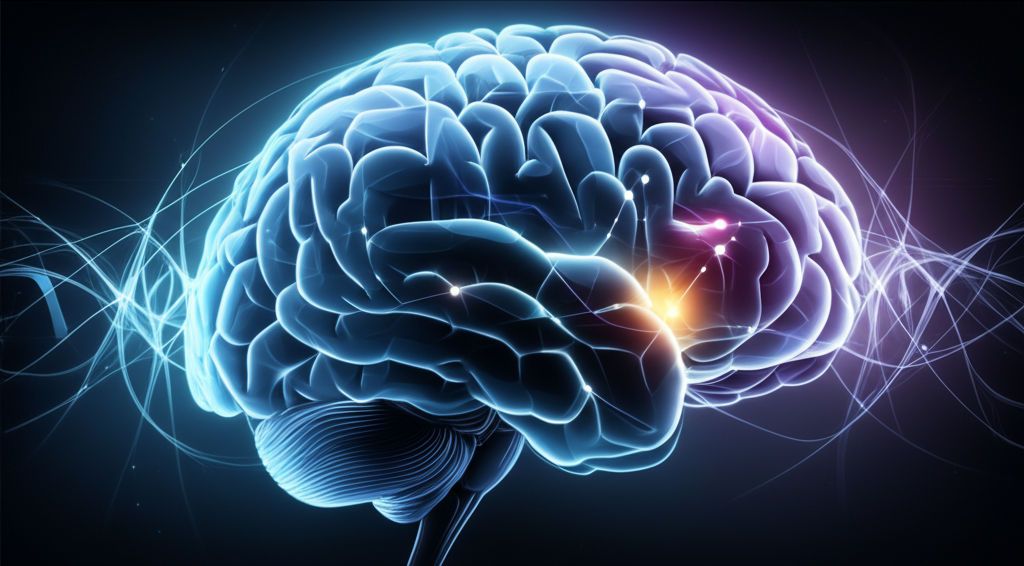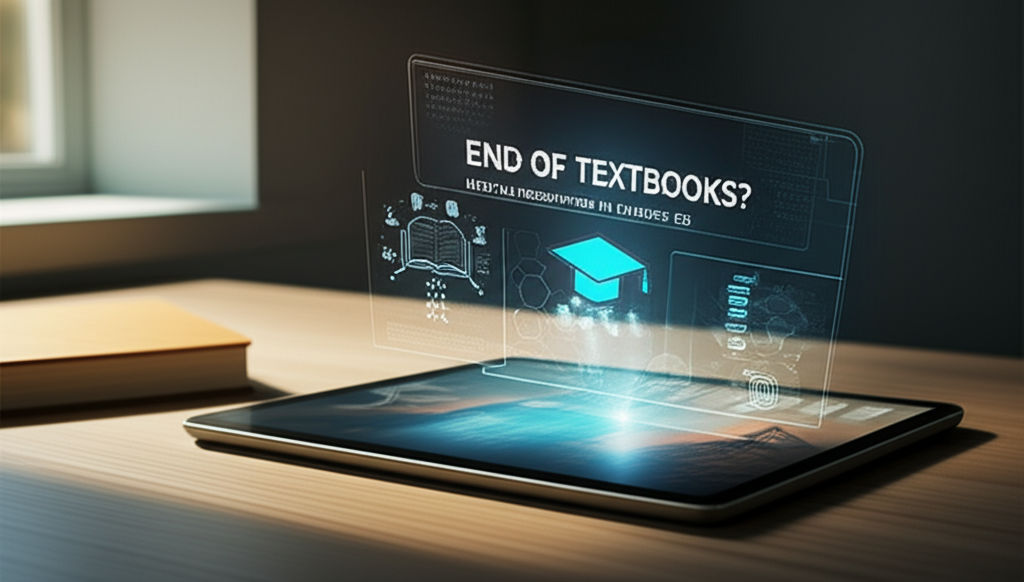Neuroscience of Learning: Brain Science in Ed
Emily Willis

Photo: Neuroscience of Learning: Brain Science in Ed
The Neuroscience of Learning: Unlocking Your Brain's Full Potential
Have you ever wondered why some things stick in your memory effortlessly, while others seem to vanish as soon as you look away? Or why some learning environments feel stimulating and effective, while others just leave you feeling drained? The answer lies deep within the incredible organ that sits inside your skull: your brain. Welcome to the fascinating world of the neuroscience of learning, where we explore how brain science can revolutionize the way we teach, learn, and grow.
This isn't about complex scientific jargon; it's about understanding the basic blueprints of how your brain works so you can learn smarter, not just harder. Whether you're a student, a parent, an educator, or simply a lifelong learner, grasping these core principles of brain-based learning can unlock a world of possibilities for more effective and joyful learning experiences.
Decoding the Brain's Learning Lab
At its heart, the neuroscience of learning is an interdisciplinary field that combines insights from neuroscience, psychology, and education to understand how the brain processes, retains, and applies information. It's about designing educational experiences that align with the brain's natural processes. Think of your brain as a dynamic, ever-changing landscape, constantly rewiring itself based on your experiences. This remarkable ability is called neuroplasticity. Every new piece of information you learn, every skill you acquire, literally reshapes your brain's neural pathways, making those connections stronger the more you use them.
The goal of brain-based learning is to create conditions that boost motivation, engagement, and long-term retention by tapping into how the brain naturally receives, processes, and stores information. It's a shift from traditional, often passive, learning methods to more active, brain-friendly approaches.
The Pillars of Brain-Based Learning
To truly understand how to optimize learning, let's explore some key pillars of brain science and their direct impact on how we absorb and retain knowledge.
Neuroplasticity: Your Brain's Amazing Ability to Adapt
Imagine your brain isn't a fixed, unchangeable entity, but rather a flexible, adaptable organ that can constantly reorganize and form new connections. That's neuroplasticity in action. This means your intelligence and abilities aren't set in stone; they can be developed and improved through dedication and effort.
When you learn something new, the connections between your brain cells (neurons) are reinforced. The more you practice a skill or review information, the stronger these pathways become, leading to better retention. This understanding is a cornerstone of the "growth mindset," a belief that your abilities can expand with practice and persistence. Teaching about neuroplasticity itself can help foster a growth mindset in learners, empowering them to believe in their capacity for improvement.
Attention: The Gateway to Learning
Before your brain can even begin to learn something new, it needs to pay attention. Attention acts like a spotlight, focusing your cognitive resources on relevant information. Without focused attention, information struggles to make its way into your memory systems.
However, our attention spans aren't limitless. Distractions, whether internal or external, can easily derail the learning process. Therefore, creating an environment that minimizes distractions and helps learners focus is crucial for effective learning. This could involve clear instructions, engaging materials, and even short "brain breaks" to help reset focus.
Memory: From Short-Term to Long-Term Retention
Memory is the ultimate goal of learning – getting information to "stick." Your brain has different memory systems, including a limited-capacity "working memory" (where you process information in the moment) and a vast "long-term memory" (where information is stored for extended periods). The key to effective learning is moving information from working memory into long-term memory.
One of the most powerful strategies for boosting memory retention is spaced repetition. Instead of cramming, this technique involves reviewing material at increasing intervals over time. This scientifically validated method helps information move from short-term to long-term memory by strengthening neural connections precisely when your brain is about to forget it. Think of it like revisiting a path in the woods – the more times you walk it, especially after a little time has passed, the clearer and more established it becomes.
Another effective memory booster is retrieval practice, which simply means actively trying to recall information from memory rather than just passively re-reading it. This could be through flashcards, self-quizzing, or explaining concepts in your own words. When you actively retrieve information, you strengthen the neural pathways associated with that memory, making it easier to access later.
Emotion: The Unseen Force in Learning
Did you know your emotions play a pivotal role in how you learn and remember? Emotions are deeply intertwined with learning processes, influencing attention, motivation, and memory consolidation. Strong emotions, whether positive or negative, can significantly impact memory. For instance, emotionally arousing events tend to be remembered more vividly.
A positive emotional climate in the learning environment can boost motivation and engagement, leading to better learning outcomes. Conversely, high stress or anxiety can hinder learning by shifting brain activity away from the areas needed for higher-level thinking. Creating a safe, predictable, and supportive environment where learners feel comfortable and emotionally regulated is essential for optimal brain function and learning.
Cognitive Load: Don't Overwhelm the Brain
Your working memory has a limited capacity – it can only handle a certain amount of information at once. This is where cognitive load theory comes in. If too much information is presented simultaneously, it can lead to "cognitive overload," making it difficult for the brain to process and transfer new knowledge to long-term memory.
To avoid this, instructional design should aim to reduce "extraneous load" (unnecessary information or distractions) and optimize "intrinsic load" (the inherent difficulty of the subject matter). Breaking down complex information into smaller, manageable chunks and presenting it clearly can prevent overwhelm and facilitate deeper learning.
Practical Applications: Bringing Brain Science to the Classroom (and Home!)
Understanding the neuroscience of learning isn't just for academics; it offers powerful, actionable insights for anyone involved in education or personal growth.
Active Learning Strategies
Traditional lecture-based teaching can be less effective than active learning because it doesn't fully engage the brain's natural inclination to explore and construct knowledge. Active learning involves students participating, interacting, and having hands-on experiences.
Tips for Active Learning:
- Discuss and Debate: Encourage group discussions and debates to process information verbally and hear different perspectives.
- Problem-Solve: Engage in problem-solving tasks and real-world challenges that require critical thinking.
- Hands-on Activities: Incorporate experiments, projects, or simulations to make learning tangible.
- Teach Others: Explaining a concept to someone else is a powerful way to solidify your own understanding.
Spaced Repetition and Retrieval Practice
These are your secret weapons for boosting long-term memory.
- Flashcards are Your Friend: Use physical or digital flashcards (like Anki) that automatically schedule reviews based on your recall performance.
- Self-Quizzing: After reading a chapter or watching a lesson, close your book/screen and try to recall everything you can. What were the main points? What questions do you have?
- Regular Reviews: Don't just study for a test and forget it. Schedule short, regular review sessions for past material to keep it fresh in your mind.
The Power of Sleep and Nutrition
Your brain isn't a machine that can run indefinitely without maintenance. Adequate sleep and good nutrition are fundamental for optimal brain function and learning.
- Prioritize Sleep: During sleep, your brain consolidates memories, processes information, and clears out toxins. Lack of sleep impairs attention, concentration, and problem-solving skills. Aim for consistent, quality sleep.
- Nourish Your Brain: A balanced diet provides the essential nutrients your brain needs to function optimally. Foods rich in omega-3 fatty acids, whole grains, and lean proteins can enhance brain function, while high sugar and unhealthy fats can lead to energy crashes and reduced concentration.
Cultivating a Growth Mindset
Encourage the belief that abilities can be developed through effort.
- Praise Effort, Not Just Outcome: Focus on the process and persistence rather than just the final result. This teaches that hard work leads to growth.
- Embrace Mistakes: View errors as opportunities for learning and growth, not as failures. Scientists have even shown that mistakes can neurologically grow your brain.
- Talk About the Brain: Explain to students (or yourself!) how neuroplasticity means their brains can literally get smarter and form new connections with practice.
Managing Stress and Emotions
A calm and positive environment supports learning.
- Model Emotional Regulation: For educators and parents, demonstrating how to manage emotions calmly provides a powerful lesson.
- Teach Coping Strategies: Introduce techniques like deep breathing, mindfulness, or taking short breaks to help regulate emotions [17,
Latest ✨
View Allcultivating healthy lifestyle habits to improve overall well-being. It focuses on three pillars of well-being: nutrition, exercise, and sleep. It provides tips on how to incorporate these practices into daily routines, such as eating a variety of foods, finding enjoyable forms of exercise, and establishing a consistent sleep schedule.
Emily Willis
New business? Discover why registration is vital for legal protection, credibility, and funding. Our guide simplifies establishing your venture.
Emily Willis
Unlock smarter spending! Learn how marginal utility guides your choices & boosts satisfaction.
Emily Willis
Globalization has a profound impact on the economies of developing countries, offering both opportunities and challenges. By increasing access to markets, facilitating technology transfer, creating jobs, and promoting cultural exchange, globalization can drive economic growth and development. However, addressing the challenges of economic inequality, loss of domestic industries, environmental impact, and cultural homogenization is essential to ensure sustainable and inclusive growth. By adopting strategic measures and fostering international cooperation, developing countries can maximize the benefits of globalization and build a brighter future
Emily Willis
Business
View All
August 5, 2024
The Importance of Having Insurance to Protect Yourself and Your Assetsinsurance in protecting individuals and businesses from financial losses due to unforeseen events. It explains the different types of insurance available, such as health, life, auto, homeowners, renters, disability, and liability insurance, and their benefits.
Emily Willis

June 9, 2025
Achieve Customer Service ExcellenceMaster customer service excellence to build lasting loyalty & drive growth. Get your blueprint for success and exceed customer expectations!
Emily Willis

June 9, 2025
Build a Sustainable BusinessUnlock enduring success by building a sustainable business. Discover how balancing People, Planet, & Profit drives long-term viability & positive impact.
Emily Willis
Economy
View AllUncover the invisible market forces shaping prices & production. Learn how supply & demand drive our economy—essential for consumers & businesses.
Read MoreUnlock the power of Human Capital! Discover why it's the vital asset for the future of work, driving innovation & competitive advantage. Learn key strategies.
Read MoreFiscal policy is a crucial tool used by governments to influence economic activity and achieve various objectives. It involves decisions on government spending, taxation, and borrowing. During economic downturns, fiscal policy plays a key role in supporting recovery, stimulating demand, and promoting growth.
Read MoreEntertainment
View All
August 5, 2024
Music Universal Language: Connecting and Inspiring Across CulturesMusic has the power to transcend language barriers and connect people on a deep emotional level. It serves as a bridge between cultures, fostering understanding and appreciation for diversity. The universality of rhythm and melody creates a sense of unity, while the diversity of musical styles allows for exploration and creativity.
Emily Willis

August 4, 2024
Social Media's Influence on Celebrity Culture: Trends and ImpactsSocial media has revolutionized celebrity culture by enabling direct fan engagement, promoting authenticity, and creating new trends such as influencer marketing and digital content creation.
Emily Willis

August 4, 2024
The Evolution of Digital Distribution in the Music Industry: Challenges and OpportunitiesThe music industry has been transformed by digital distribution, which allows quick access to a vast catalog of music through streaming services and online stores.
Emily Willis
Health
View AllPreventive healthcare focuses on strategies to prevent disease and maintain well-being, rather than just treating illnesses after they arise. It helps identify risk factors early on, allowing for interventions that can prevent or delay the onset of chronic diseases.
Emily Willis
Heart disease is a leading cause of death globally, but early detection and prevention strategies can reduce its impact. This article discusses the importance of early detection, common risk factors, preventive measures, and lifestyle changes for heart health. Understanding heart disease, recognizing symptoms, and undergoing regular screenings are crucial. Common risk factors include high blood pressure, high cholesterol, diabetes, smoking, obesity, physical inactivity, and family history. Symptoms of heart disease include chest pain, shortness of breath, fatigue, irregular heartbeat, and swelling. Diagnostic tests and screenings include blood pressure measurement, cholesterol screening, blood glucose test, ECG, stress test, and imaging tests. Preventive measures include adopting a heart-healthy diet, regular physical activity, quitting smoking, managing stress, maintaining a healthy weight, and limiting alcohol consumption. Medications and treatment options may be necessary for individuals at high risk or diagnosed with heart disease.
Emily Willis
Regular physical activity is crucial for maintaining long-term health and well-being. It has numerous benefits, including improving cardiovascular health, aiding in weight management, enhancing mental health, strengthening bones, boosting immune function, and promoting longevity.
Emily Willis
Trending 🔥
View All
1
2
3
4
5
6
7
8
9
10
Lifestyle


Sports
View AllAugust 4, 2024
Benefits of Cross Training for Athletes: Improves Performance and Prevents Injuries
Read MoreAugust 5, 2024
Celebrating Sports Legends: Honoring Iconic Figures and Their Enduring Impact
Read MoreTechnology
View All
August 5, 2024
Types of Cloud Computing Services Available
Cloud computing has become essential for modern businesses, offering services that streamline processes, reduce costs, and increase flexibility. Understanding the types of cloud computing services available, such as Infrastructure as a Service (IaaS), Platform as a Service (PaaS), and Software as a Service (SaaS), can help businesses make informed decisions.

August 5, 2024
Best AR Translation Apps Tested
Uncover the best AR translation apps on the market through our in-depth testing and reviews. From seamless voice conversations to real-world text translation, these apps will revolutionize the way you communicate across languages.

August 5, 2024
How IoT is Changing the Way We Live and Work
The Internet of Things (IoT) is revolutionizing daily life and professional environments by connecting devices to the internet, allowing for communication, data collection, and autonomous task performance. IoT is transforming homes, workplaces, healthcare, and transportation by enhancing convenience, efficiency, and safety.

August 4, 2024
Latest Trends in Mobile Application Development
latest trends in mobile application development for 2024. These trends include the integration of 5G technology, artificial intelligence and machine learning, Internet of Things (IoT), augmented reality (AR) and virtual reality (VR), cross-platform development, mobile wallets and payment gateways, progressive web apps (PWAs), enhanced app security, voice search and integration, and sustainability and green mobile apps.



















